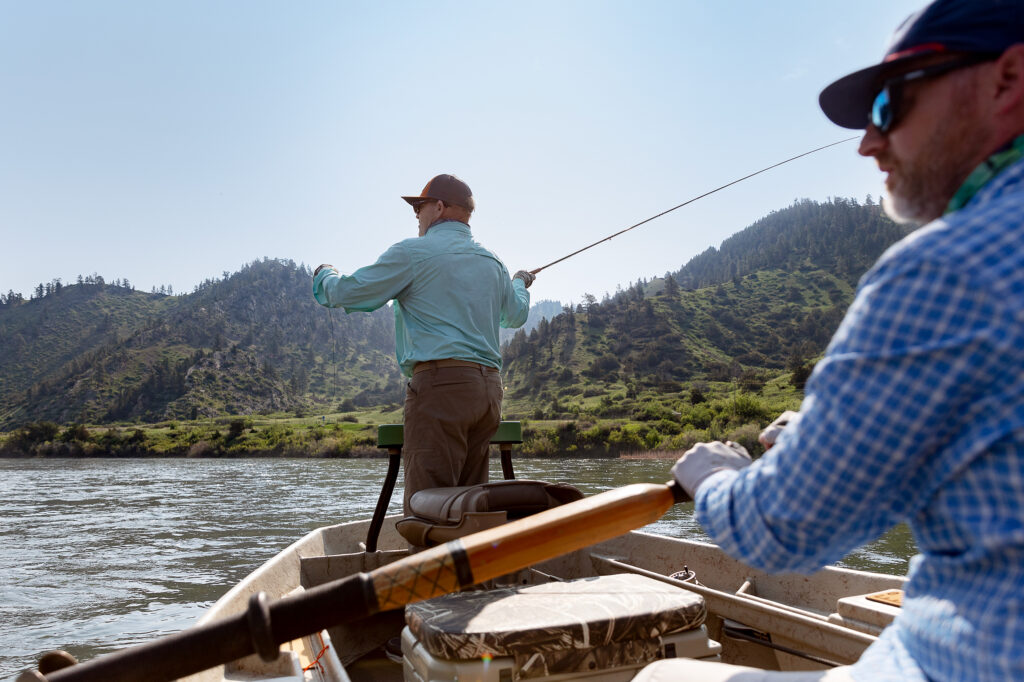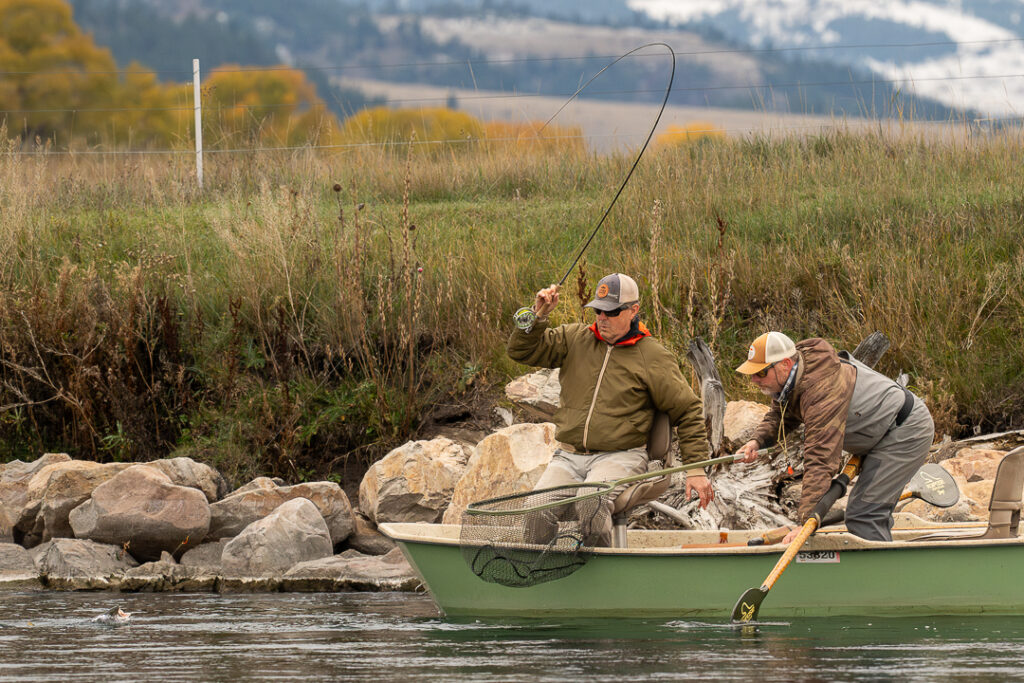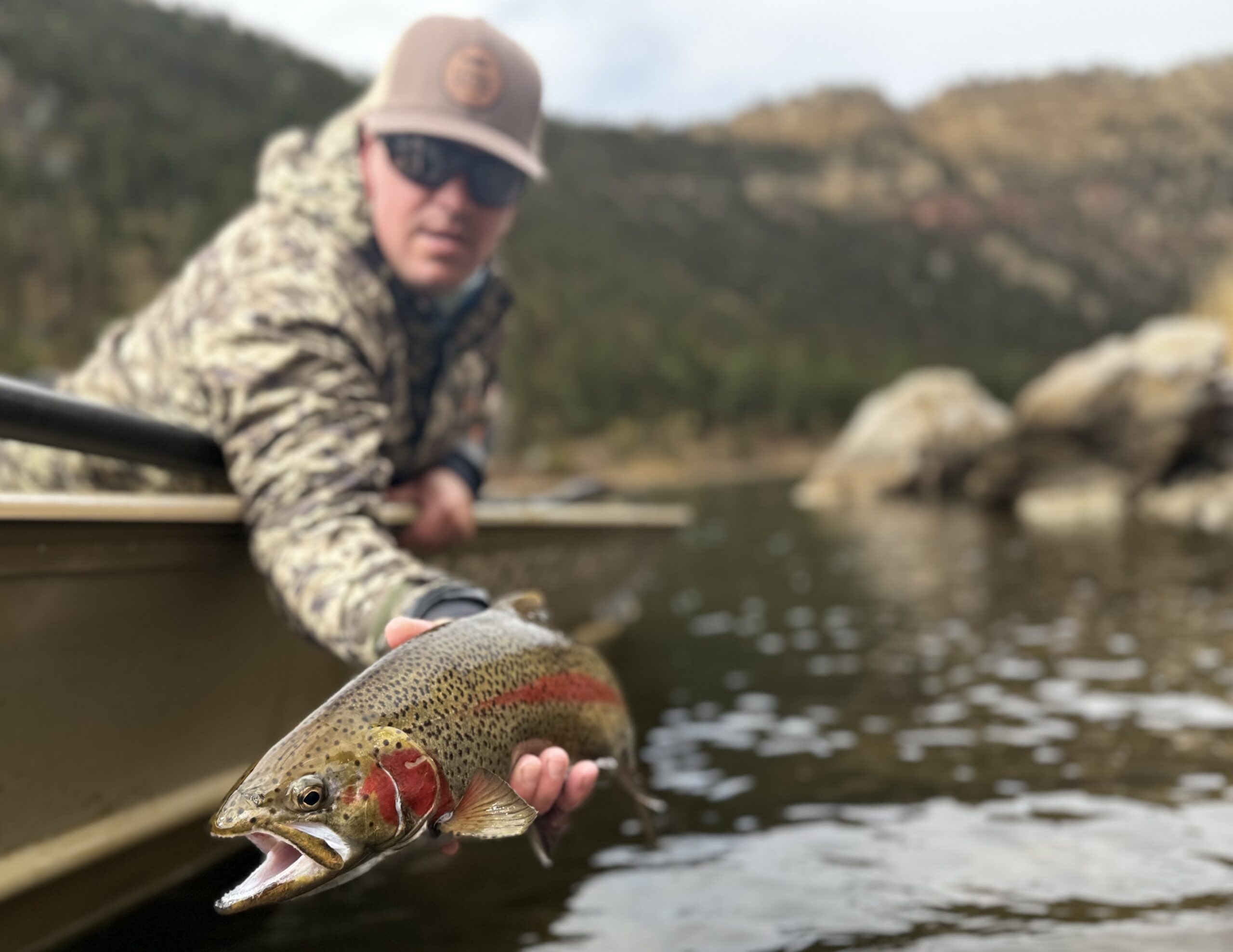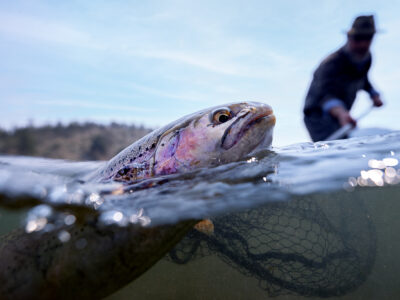A world-class fly fishing destination and one of Montana’s finest fisheries, the Missouri River sits just a short drive from Helena. This a year-round tailwater begins at Holter Dam and flows north 35 miles through Wolf Creek, Craig, and down to Cascade. Along the way, it’s lined with deep pools, shallow flats, and productive riffles—prime water for trout. Add in abundant wildlife and stunning geology, and it’s easy to see why this river is so special.
So, when’s the best time to fish the Missouri? Let’s break it down season by season and explore what each offers.

Spring Fly Fishing on the Missouri River
Springtime is undoubtedly one of the best times to fly fish the Missouri River. As the snow melts and most rivers in Montana are experiencing runoff, the Missouri comes alive with the promise of exciting fly fishing opportunities. Prolific hatches of Blue-Winged Olive (BWO) mayflies and near-ideal water temperatures can make for fantastic fishing. Spring insect hatches can be intense, offering consistent dry fly fishing opportunities. Whether you’re wading through its crystal-clear currents or floating along in a drift boat, the Missouri River in spring is a fly anglers paradise. Remember, springtime weather conditions can be unpredictable, so being prepared is a good idea when spring fishing in Montana.
Summer Fly Fishing on the Missouri River
From June through August, the Missouri River shines as one of the most reliable trout fisheries in the west. Long days, abundant hatches, and consistent flows make summer a favorite for many anglers. Late May, June, and July are peak season. Fly shops, fishing guides, shuttle drivers, lodges, and outfitters are all running at full speed. Flows out of Holter Dam remain stable, and the fishing can be exceptional.
During the summer months, anglers can find success using a variety of tactics. Nymphing with indicator rigs is by far the most popular method, but dry fly fishing is the true draw of the Missouri. Intense hatches continue all summer long, with caddisflies, Pale Morning Duns, Tricos, and terrestrials in abundance.
However, it’s important to note that the summer months can be busy, and anglers should expect to share the river with other boats and fishermen.

Fall Fishing on the Mighty Missouri
Fall on the Missouri River is a time of transition and rejuvenation. From September through November, the river offers solitude, stunning scenery, and superb fishing. As the weather cools, water temperatures drop, and fish become more active and aggressive. During this time, trout enter a phase known as hyperphagia—a period of increased appetite and feeding activity that helps them prepare for the approaching winter. While nymphing and dry fly fishing remain productive, streamer fishing takes center stage. Shorter days and cooler water temperatures create prime conditions for targeting large trout. Stripping and swinging streamers on sinking lines can be very effective. Beyond the fishing, the river is framed by the vibrant colors of fall. Wildlife activity and the changing foliage provide a picturesque setting, making autumn one of the most beautiful times to experience the Missouri River.

Winter Fishing on the Missouri River
For the hardy angler, winter can be a rewarding time to fish the Missouri River. From December through March, the river sees very few anglers and offers the chance to experience its quiet beauty. While winter fly fishing on the Missouri River presents challenges, the right attitude, gear, and weather conditions can make all the difference. Anglers willing to brave the cold may be rewarded with some big trout.
Indicator fishing with nymphs can be highly productive, as trout tend to congregate in deeper, slower sections of the river to conserve energy. Midges dominate the winter scene, occasionally providing dry fly opportunities on warmer days. These hatches can be intense, often blanketing the shallow flats and bringing large pods of trout to the surface to feed.
A Year – Round Trout Fishery
The Missouri River can fish 365, offering unique challenges and rewards in every season. No matter when you choose to visit, the Missouri promises an unforgettable experience. Whether you’re a seasoned angler or a first-time visitor, the Mighty Mo has something special in store for you.


 Stillwater Fishing Montana’s Lakes
Stillwater Fishing Montana’s Lakes
Leave a Reply